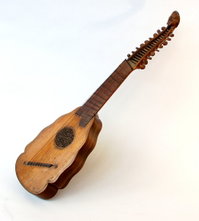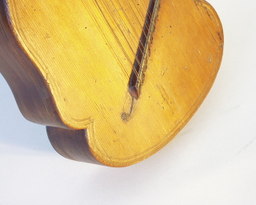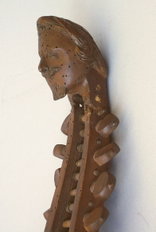Orpharion by Francis Palmer, London, 1617.
Last updated
Sunday, April 02, 2023.
|
Return to Old Instruments Gallery |
Please note that all images here have been cropped and resized in order to be web-friendly. However, larger, uncropped, high-res images of the same can be had either by clicking on the image (to open in a separate browser window), or by right clicking and selecting "Save As" (to save to your computer).
Images |
|
|||||||||||||||||||||||||||||||||||||||||||||||||||||||||||||||||||||||||||||||||||||||||||||||||||||||||||||||||||||||||||||||||||||||||||||||
|---|---|---|---|---|---|---|---|---|---|---|---|---|---|---|---|---|---|---|---|---|---|---|---|---|---|---|---|---|---|---|---|---|---|---|---|---|---|---|---|---|---|---|---|---|---|---|---|---|---|---|---|---|---|---|---|---|---|---|---|---|---|---|---|---|---|---|---|---|---|---|---|---|---|---|---|---|---|---|---|---|---|---|---|---|---|---|---|---|---|---|---|---|---|---|---|---|---|---|---|---|---|---|---|---|---|---|---|---|---|---|---|---|---|---|---|---|---|---|---|---|---|---|---|---|---|---|---|---|---|---|---|---|---|---|---|---|---|---|---|---|---|---|---|---|
General Description |
The Palmer instrument is an orpharion of 9 courses with the festooning similar to that normally seen in iconographic sources of the time. It is currently on public display as part of the collection of Musikmuseet, Musikhistorisk Museum & Carl Claudius’ Samling, Copenhagen, Denmark, and possesses the inventory number CL 139. | |||||||||||||||||||||||||||||||||||||||||||||||||||||||||||||||||||||||||||||||||||||||||||||||||||||||||||||||||||||||||||||||||||||||||||||||
Provenance / Maker |
The maker's label in the instrument indicates the name of the builder as "Francis Palmer" and the date of 1617. | |||||||||||||||||||||||||||||||||||||||||||||||||||||||||||||||||||||||||||||||||||||||||||||||||||||||||||||||||||||||||||||||||||||||||||||||
Woods1 |
Back: 4 pieces of Walnut (dark staves) and 3 pieces of Maple (light staves) Sides: Walnut Soundboard: coniferwood (probably Spruce) Neck: Maple Pegbox: Pear Fingerboard: Maple Fret "wedges": Ebony and Maple |
|||||||||||||||||||||||||||||||||||||||||||||||||||||||||||||||||||||||||||||||||||||||||||||||||||||||||||||||||||||||||||||||||||||||||||||||
Body: Sides: Fingerboard: Neck: Pegbox: Rose: |
||||||||||||||||||||||||||||||||||||||||||||||||||||||||||||||||||||||||||||||||||||||||||||||||||||||||||||||||||||||||||||||||||||||||||||||||
Fretting |
Both the nut and the bridge of the instrument are slanted so that the bass strings are longer than the treble strings. This difference in string length was an innovation used either to allow a more satisfactory bass string in terms of tone or a higher top-string pitch based on the metal available at the time.3 The fretting appears to be some sort of meantone or a mix of meantone and equal temperament. Alexander Batov has made a comparison of the fretting to equal temperamentat at both the treble and bass ends based on measurements taken directly from the full-sized drawings of the instrument by Darryl Martin (see Plans/Drawings, below) . The result of that comparison can be seen below in the following chart:
Mr. Batov's explanation of the chart follows:
Peter Forrester also has produced a drawing, below, of how the frets compare to meantone temperaments using both the measurements from from the full-sized drawings of the instrument by Darryl Martin and from measurements taken some time in the 1970s. Mr. Forrester has noted that these latter measurements correspond to Mr. Martin's measreuments at the bass but differ at the treble!5 As such, he is asking if anyone has another set of measurements which can be shared. Mr. Forrester explains that "[t]he drawing shows side-by-side and reduced to the same overall length for the octave, fret positions for ET, 1/6th comma, treble and bass (marked M) from the published plan, [and] treble and bass from the earlier drawing (marked A), 1/6th comma, ET."6 |
|||||||||||||||||||||||||||||||||||||||||||||||||||||||||||||||||||||||||||||||||||||||||||||||||||||||||||||||||||||||||||||||||||||||||||||||
A technical drawing and a report on the condition of the Palmer orpharion by Darryl Martin are available for free as PDF downloads, courtesy of the Musikhistorisk Museum of Copenhagen, Denmark.
The report contains some photos of the instrument and a general description of particular aspects of the construction of the instrument not readily apparent from the drawing. For scholars interested in this instrument, the articles below are also highly recommended, as they contain additional information not contained in the report. |
||||||||||||||||||||||||||||||||||||||||||||||||||||||||||||||||||||||||||||||||||||||||||||||||||||||||||||||||||||||||||||||||||||||||||||||||
Literature / Additional Resources |
|
|||||||||||||||||||||||||||||||||||||||||||||||||||||||||||||||||||||||||||||||||||||||||||||||||||||||||||||||||||||||||||||||||||||||||||||||
Acknowledgements |
My appreciation and thanks go to Darryl Martin for making his information on the Palmer instrument publicly available as well as for his suggestions and corrections for this page. I would also like to thank Ture Bergstrøm and the National Music Museum of Denmark for their assistance in providing information and answering questions, and for their kind submission of and permission to include high-resolution photographs of the Palmer instrument on these pages. | |||||||||||||||||||||||||||||||||||||||||||||||||||||||||||||||||||||||||||||||||||||||||||||||||||||||||||||||||||||||||||||||||||||||||||||||
Footnotes |
|
|||||||||||||||||||||||||||||||||||||||||||||||||||||||||||||||||||||||||||||||||||||||||||||||||||||||||||||||||||||||||||||||||||||||||||||||
How to cite this page: Hartig, Andrew. "Orpharion by Francis Palmer, London, 1617." Renovata Cythara: The Renaissance Cittern Site. Ed. Andrew Hartig. 02 April 2023. 02 June 2025. <http://www.cittern.theaterofmusic.com/old/palmer.html>.









